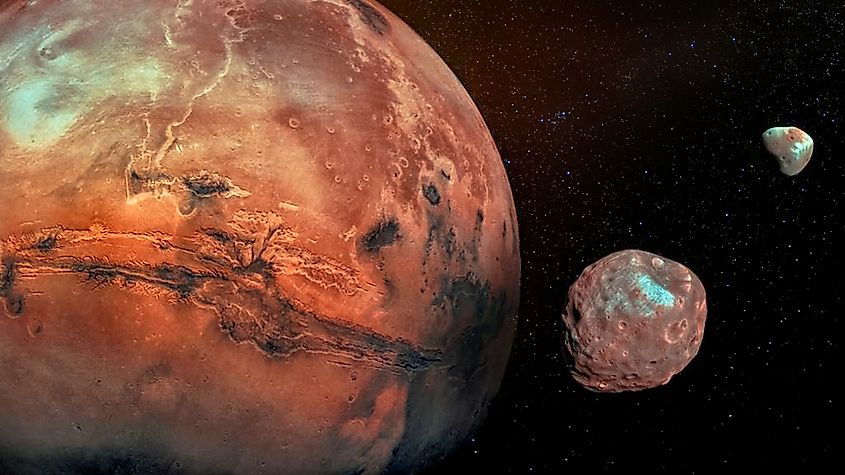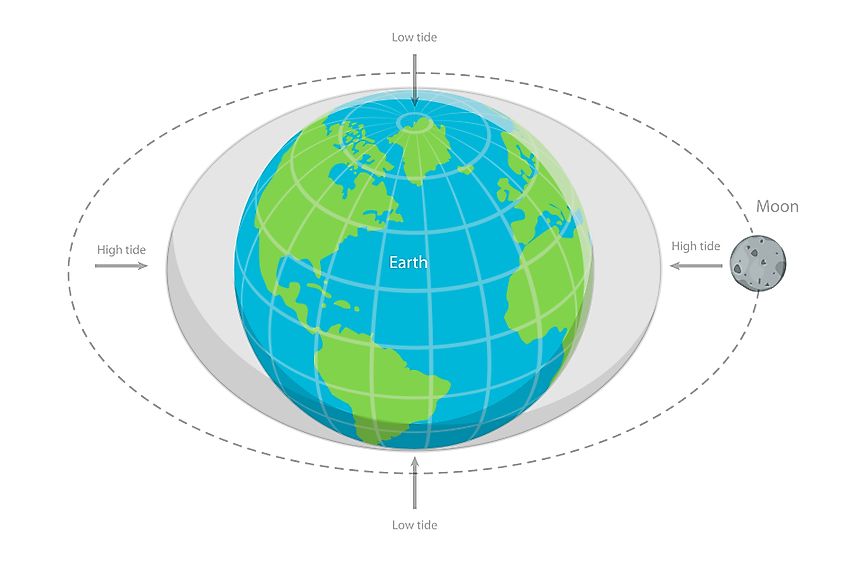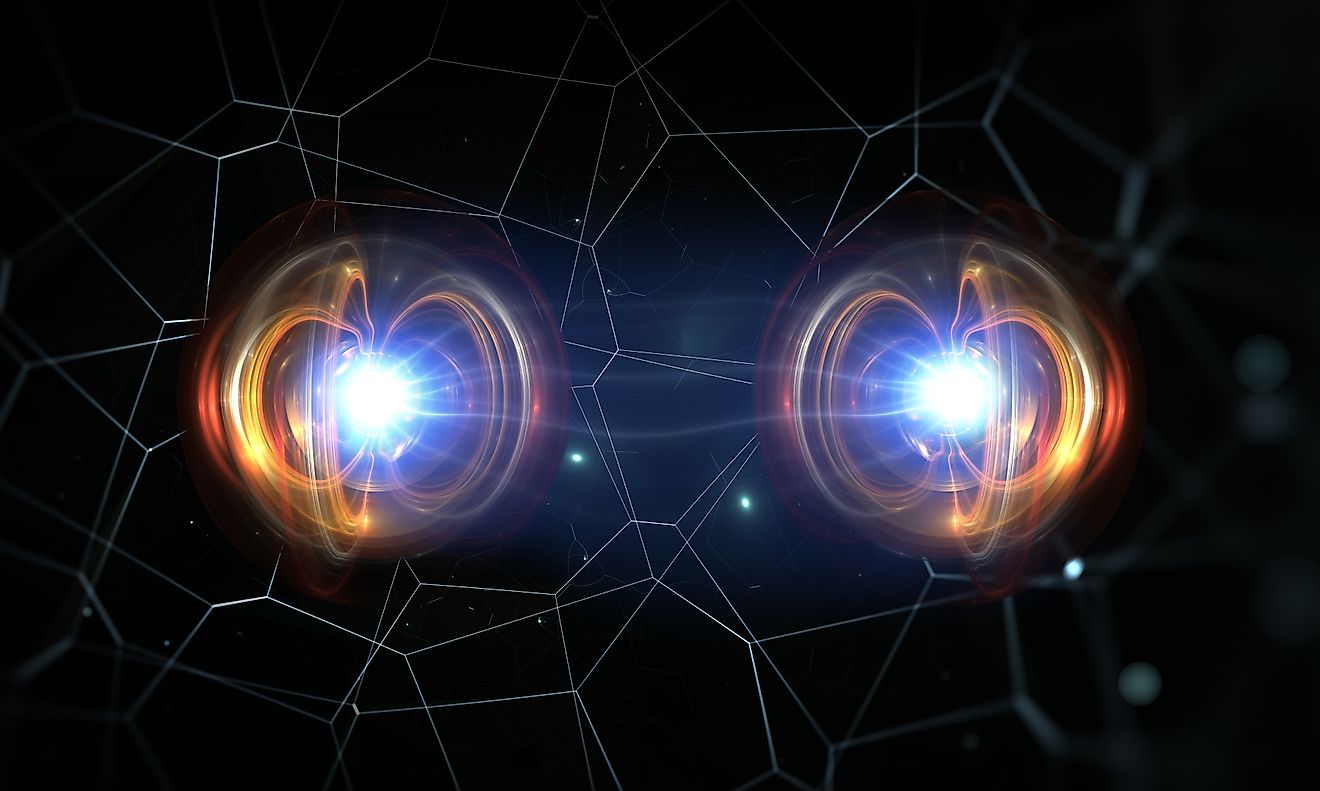
How Does Mars' Gravity Affect Our Oceans?
When standing on the Earth’s surface and gazing up at the night sky, Mars may appear as just another bright spot in the darkness. While it may look to be just a spec in the massive expansive of the universe, it is actually over 4,200 miles in diameter, just over half the size of Earth. Though the 140-million-mile distance from Earth makes Mars visually insignificant in our sky, the Red Planet has more influence than what meets the eye.
The Red Planet

Mars was formed around 4.5 billion years ago. In relation to distance from the Sun, Mars is the fourth planet in the Solar System and ranks seventh overall in size. The planet appears in a shade of red due to the oxidization of the rocks, soil, and dust. The extremely fine dust from the surface is often kicked up into the planet’s atmosphere by events such as one of the many dust storms that take place on the dry surface. These characteristics, when viewing the planet from a distance, give Mars its signature red color.
Although half the size of Earth, Mars’ land area is 55.7 million square miles. Although only about one-third of the surface on Earth is covered by sand and dust, the surface on Mars mostly consists of deserts. A single day on the Red Planet is similar to an Earth, but slightly longer at 24 hours, 37 minutes. Mars completes an orbit around the Sun once every 687 Earth days, making a year on Mars almost twice that of Earth.
Mars has two moons, Phobos and Deimos, which are asteroids or pieces of debris that became entrapped by Mars’ gravitational pull while passing by the planet.
How Gravity Works

Gravity, also referred to as gravitational attraction, is a force that pulls objects towards a planet or other body of mass. This force of gravity is what causes objects to fall toward the surface of the Earth and is the reason all the planets in the Solar System are kept in orbit around the Sun. Larger objects, such as planets, have more gravitational attraction because of their immense size. This explains why planets are able to capture natural satellites nearby and keep them in orbit.
The natural phenomenon of gravitational attraction can best be explained when referencing an example inspired by Newton’s Law of Gravitation and Einstein’s Theory of General Relativity (GR). If you were to picture, a thin blanket stretched out flat and suspended in the air, placing a basketball in the center of the blanket. The basketball would create an indentation in the blanket. If you were to then roll a baseball in a straight path close enough to the basketball, the baseball’s path would change direction when it rolls into the indented area of the basketball. Moreover, if the baseball is rolled closer to the basketball, the effect is more intense. The further away the baseball is rolled the less intense the effect. This is also true in relation to gravity in that gravitational attraction weakens with distance.
How a Planet’s Gravity Can Affect Other Objects

In the Solar System, the eight planets are within the gravitational field of the Sun, meaning that the planets are influenced by the Sun’s gravity. Similarly, each planet has gravitational attraction of its own, which is the reason a planet is able to maintain a moon in orbit. If two planets’ come close to one another in orbit, each of the planets’ gravity has a slight influence on the other. This is true in the Solar System, where planets that pass by one another have gravitational pulls that cross into each other. With the eight planets of the Solar System having relatively stable orbits, the crossover of one planet’s gravity bumping into the other has the potential to alter an orbital path and even possibly change the orbit entirely.
The Effect of Mars’ Gravity on Earth’s Oceans

The Moon, Earth’s only natural satellite, orbits the planet under the influence of Earth’s gravity. However, the Moon has a gravitation pull of its own. This influence can be seen impacting Earth by witnessing the changes in tides. The gravity of the Moon pulls on Earth, and the planet’s water gets tugged towards its satellite. This event, paired with the rotation of the Earth, is why, to humans, the tides appear to rise and fall.
Although, the Moon is not the only object in which a gravitational attraction influences the planet’s water. There is another, larger, distant mass tugging at Earth. Mars’ gravity has an effect on Earth’s currents deep in the ocean. When the gravity of Mars pulls on Earth, it causes Earth to wobble on its axis, resulting in slight changes to the stability of the planet’s orbit. This subtle impact tilts the Earth slightly more and increases exposure to sunlight, which warms the planet and causes currents in the ocean to become stronger. Moreover, if ocean temperatures were to rise, it would enable the possibility for global climates to change. By analyzing 65 million years of Earth’s ocean current history, researchers have found that the strength of currents changed over 2.4-million-year cycles. This cycle occurs simultaneously with the gravitational relationship of Earth and Mars.
Mars has an orbit around the Sun that, every 2.4 million years, comes close enough to Earth to tug on the planet. This tug is a result of Mars’ gravitational pull that subtly nudges Earth and influences its orbital path through the Solar System. It is in the midst of this gravitational impact from Mars that the oceans on Earth are affected. The Red Planet’s gravity results in a subtle wobble to Earth’s rotation and, with an increased tilt in Earth’s positioning, exposes Earth to increased solar radiation that has the potential to warm the planet’s climate and increase the circulation of Earth’s oceans, creating stronger, more intense currents.











